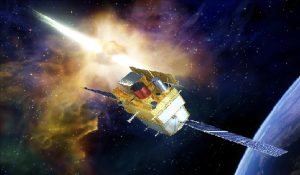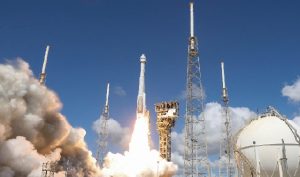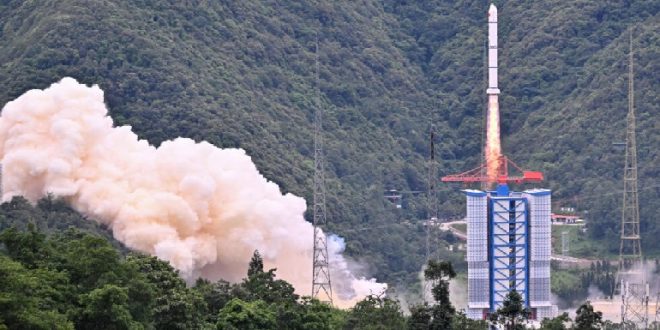23-06-2024
PARIS/ BEIJING: A satellite developed by France and China has blasted off on a hunt for the mightiest explosions in the universe, in a notable example of cooperation between a Western power and the Asian giant.
On Saturday, the 930kg (2,050-pound) satellite carrying four instruments, two French, two Chinese took off at about 3pm (07:00 GMT) aboard a Chinese Long March 2C rocket from a base in Xichang, in the southwestern Chinese province of Sichuan, state broadcaster CCTV reported.
 Developed by engineers from both countries, the Space Variable Objects Monitor (SVOM) will seek out gamma-ray bursts, the light from which has travelled billions of light years to reach Earth.
Developed by engineers from both countries, the Space Variable Objects Monitor (SVOM) will seek out gamma-ray bursts, the light from which has travelled billions of light years to reach Earth.
Gamma-ray bursts generally occur after the explosion of huge stars those more than 20 times as big as the sun or the fusion of compact stars.
The extremely bright cosmic beams can give off a blast of energy equivalent to more than that of a billion suns.
Observing them is like “looking back in time, as the light from these objects takes a long time to reach us”, Ore Gottlieb, an astrophysicist at the Flatiron Institute’s Center for Computational Astrophysics in New York, told the media.
“SVOM has the potential to unravel several mysteries in the field of (gamma-ray bursts, GRBs), including detecting the most distant GRBs in the universe, which correspond to the earliest GRBs,” Gottlieb added.
The most distant bursts identified to date were produced just 630 million years after the Big Bang when the universe was in its infancy.
When in orbit 625km (388 miles) above the Earth, the satellite will send its data back to observatories. Once it detects a burst, SVOM will send an alert to a team on duty around the clock.
When the data is analyzed could help to better understand the composition of space, and the dynamics of gas clouds or other galaxies, according to analysts.
The main challenge is however that gamma-ray bursts are extremely brief, leaving scientists in a race against time to gather information.
 This project stems from a partnership between the French and Chinese space agencies as well as other scientific and technical groups from both nations.
This project stems from a partnership between the French and Chinese space agencies as well as other scientific and technical groups from both nations.
Space cooperation at this level between the West and China is also fairly uncommon, especially since the United States banned all collaboration between US space agency NASA and Beijing in 2011.
“US concerns on technology transfer have inhibited US allies from collaborating with the Chinese very much but it does happen occasionally,” Jonathan McDowell, an astronomer at the Harvard-Smithsonian Center for Astrophysics in the United States, told media.
So while SVOM is “by no means unique”, it remains “significant” in the context of space collaboration between China and the West, McDowell added.
China’s advances in space and lunar exploration are rapidly outpacing those of the US, attracting partners from European and Asian countries as a result.
China’s Chang’e-6 lunar probe this month carried to the far side of the moon payloads from the European Space Agency, as well as from Pakistani, French and Italian research institutes.
China is working with countries including Brazil, Egypt and Thailand to develop and launch satellites.
A Chinese spacecraft carrying rock and soil samples from the far side of the Moon has lifted off from the lunar surface to start its journey back to Earth, according to state media. (Int’l News Desk)
 Pressmediaofindia
Pressmediaofindia




